Swimming is an excellent way to have fun while staying in shape. It’s a full-body workout accessible to people across age groups. The buoyancy of the water helps support the joints and muscles, making it an effective way to stay fit even for those with joint problems or other issues. There are many health benefits of swimming, and the ability to build muscle mass is one such benefit. The different muscle groups that are put to work while swimming depends on the type of stroke being used. Not all swimming strokes put pressure on the same muscle groups. In general, though, swimming helps build muscle mass for the following muscle groups:
- Abdomen
- Back muscles
- Shoulder muscles
- Chest
- Forearm muscles
- Gluteal muscles
In this article, we’ll explore how swimming helps in building muscle mass and what you can do to get the best results.
Contents
Swimming as a form of resistance training
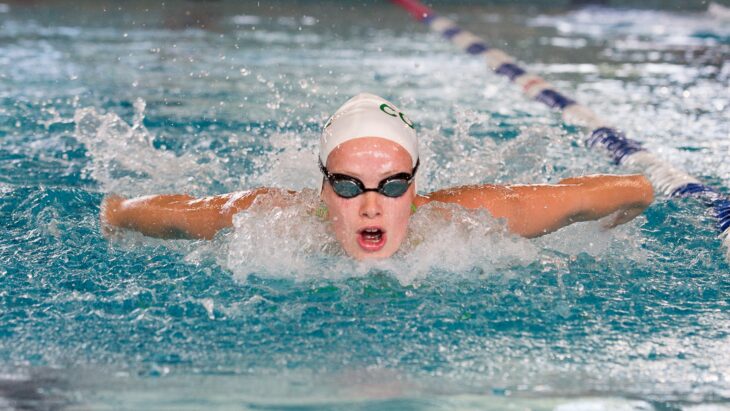
img source: collegesport.co.nz
While exercising, your muscles stretch and tear. On completion of the exercise routine, the body starts healing itself and repairing these tears. It is during this recovery phase that muscle mass is built.
Swimming is a form of resistance training where your body works against the resistance of the weight or force of water. This results in stretching and tearing of the muscles and promotes recovery, allowing for the building of muscle mass. The density of water is higher than air which means that you can build muscle mass a lot faster through swimming than you can through conventional forms of cardio such as running.
The stress swimming puts on your bones and joints is minimal, reducing the impact on your body and helping you stay active throughout your life. By pushing and pulling against the force of water, higher resistance is created to boost the building of muscle mass and endurance. Swimming is also known to enhance muscle endurance, a crucial requirement for engaging in physical activities in the future.
Different strokes for different muscle groups
There are many strokes that can be used to swim, and they engage different muscle groups, making it possible to build muscle mass in different parts of the body. Here’s a breakdown of the muscle groups worked through different strokes:
Breaststroke
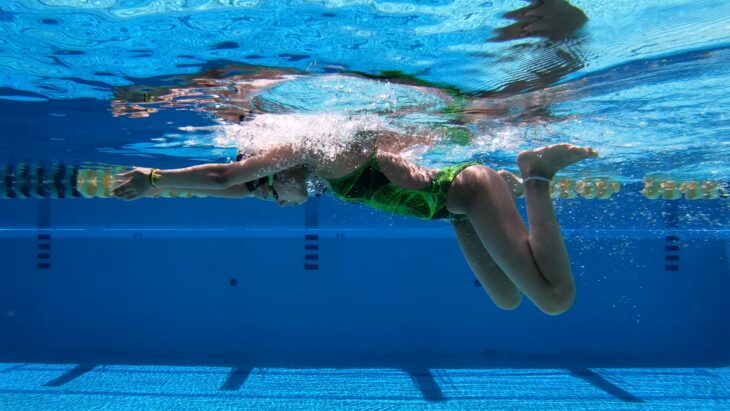
img source: amazonaws.com
The breaststroke involves the thighs to a great extent and is a great workout for your thigh muscles. You can build stronger and larger muscles in this region of your body through a breaststroke. Although it primarily engages the thigh muscles, there are other muscle groups that can get a workout through the breaststroke. The kick action engages hamstrings, gluteal muscles, and quadriceps. Even the pectoral muscles in the chest get a workout through breaststroke movements. Muscles of the shoulder and upper arm are also worked, especially the biceps, deltoids, and triceps.
Freestyle
If you want toned biceps and triceps, placing stress on them through freestyle will help you build muscle mass and achieve your goal. Freestyle also strengthens muscles in the back, abdomen, and torso region. Deltoid and shoulder muscles are worked through the extended crawl arm movements. Flutter kick movements engage the lower body that includes foot muscles and hip flexors.
Butterfly
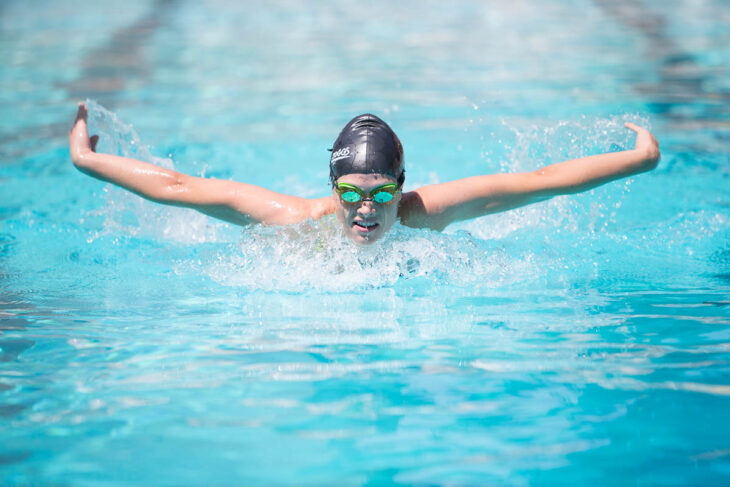
img source: zoggs.com
Most swimming strokes engage and help build muscle mass in the abdominal and chest regions. This tends to be an area of concern for people. If you want to focus on these two regions, specifically, the butterfly stroke can help you achieve the results you’re looking for. Butterfly stroke also engages the lower back, gluteal muscles, arm & shoulder muscles.
Backstroke
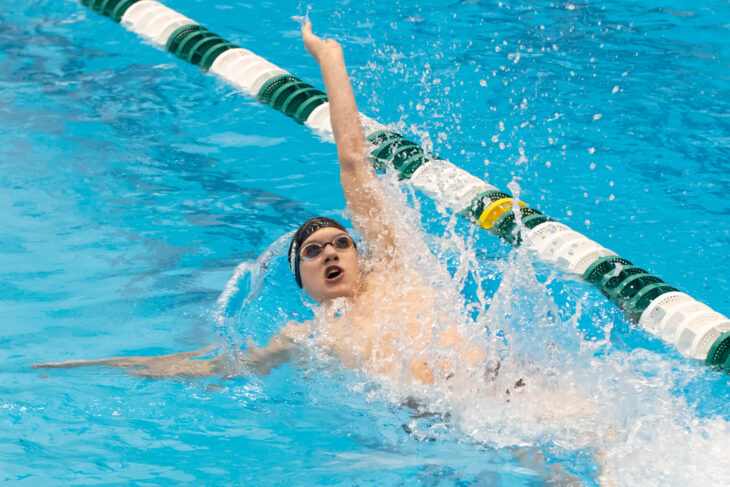
img source: swimlikeafish.org
The Latissimus Dorsi muscles connect the upper extremities of the body with the vertebral column and get a good workout through backstroke. These muscles play a crucial role in normal human movement and can give your back a much-desired toned look. Backstroke also targets your inner & outer abdominal muscles, hamstrings, lower body muscles, and hip flexors.
You can employ a combination of different strokes to work on specific muscle groups and mix it up during your swimming sessions to optimize your gain in muscle mass. Engaging in at least 30 to 45 minutes of swimming sessions five days a week will help you build muscle mass and sustain long term changes. If you last longer in a particular session, you’ll be able to build more muscle mass during recovery.
Tips for building muscle mass through swimming
Maintain consistency
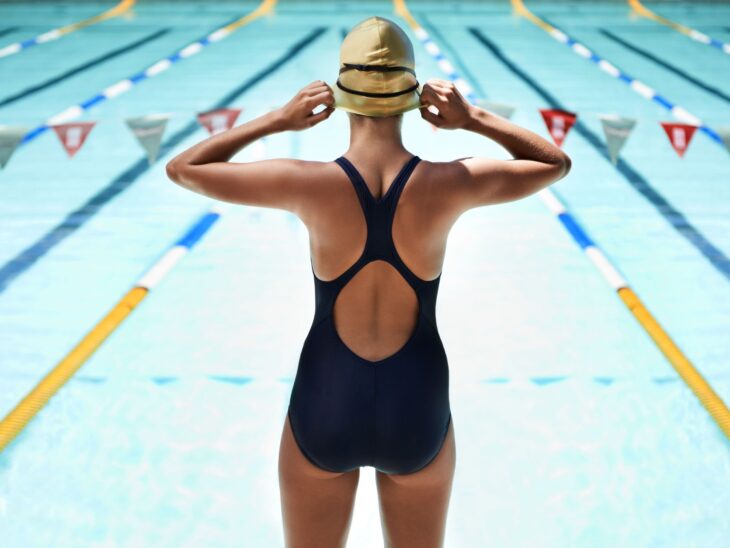
img source: verywellfit.com
You won’t see results when you just start off with your swimming routine. It’s necessary for you to be consistent with the routine if you want to see results. Make sure you get at least 30 to 45-minute sessions five times a week to build muscle mass in the long run.
Intensify and vary your routine
Following the same routine isn’t going to help build muscle mass through swimming. You need to switch it up now and then so that you give your muscles something new to adjust to. Try out different strokes for different weeks to work for different muscle groups and aim to reduce the time you take to complete each lap. Swimming for greater lengths in lesser time will make your routine more intense and help build muscle mass.
You can start off with a warm-up followed by a front crawl and breaststroke. Doing laps with a float between your legs will ensure that you’re only using your arms for swimming. You can then take out the float and alternate between different strokes. Once you’ve finished your main sets, you can do a cooldown lap at a comfortable pace to help calm your muscles.
Eat right

img source: coachwell.com
Eating healthy is a very important aspect of fitness. If you want to build muscle mass and sustain it, you need to make sure you’re eating right. Be sure to consume enough healthy protein and carbohydrates to have the energy to swim. Avoid processed foods and refined sugars as much as possible to see changes in your body through swimming.
Give separate attention to arms and legs
Just like you would focus on arms and legs on different days at the gym, try to include training sessions that engage your arms and legs separately. Using a kickboard is a great way to focus on your legs. Your arms will only hold you up, but your legs will be involved in propelling you forward. It is a great way to engage your core and build central muscles as well.
For your arms, you can use a pull buoy to intensify your workout and isolate your arms. While it’s difficult to keep your legs out of it entirely, using a pull buoy can help you build muscle mass in your arms more quickly.
Support with strength training
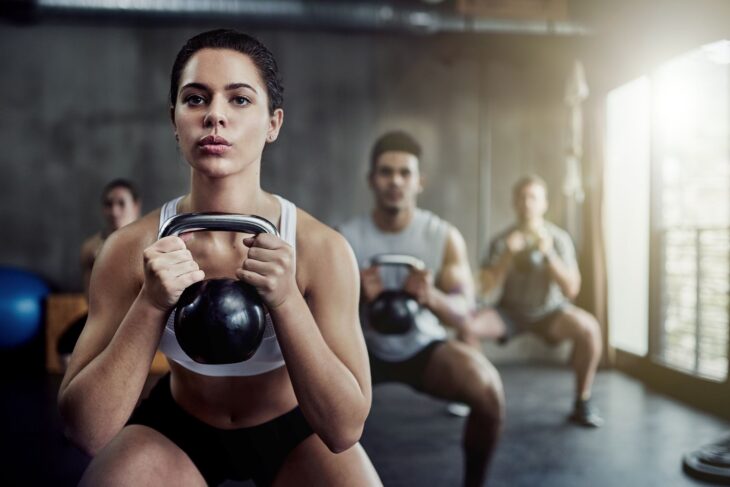
img source: hearstapps.com
Just because you’re swimming doesn’t mean you have to forget about strength training. At least twice a week, get busy with weightlifting. You don’t necessarily have to hit the gym. You can bring strength training to the pool by carrying water dumbbells or light weights. Using weights on your ankles and wrists can increase resistance, but you have to be careful to ensure you don’t sink with the weights.
Make the most of your swimming sessions to build muscle mass and enjoy your training with these tips. You won’t even be putting excessive stress on your joints that usually accompanies traditional exercise regimens.
To learn more about how you can build muscle mass, check out BarrierReefPoolsPerth.
